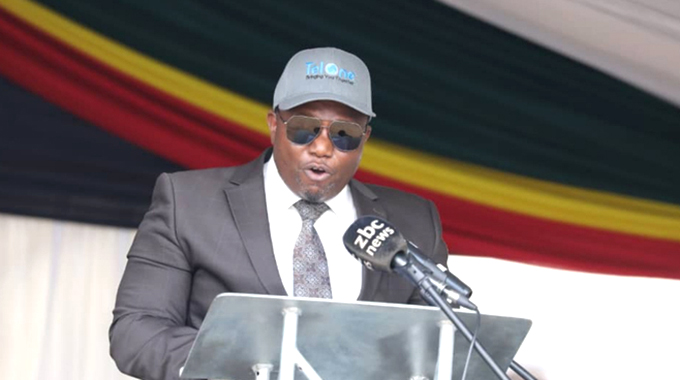Govt polishes up interbank market

Golden Sibanda Senior Business Reporter
GOVERNMENT is working on ensuring efficient functioning of the interbank market to meet the economy’s foreign currency requirements and bring sanity to price increases that are driven by black market currency premiums. The Government believes that the country is generating enough hard currency but prevailing shortages are a result of inefficient allocation and failure by some exporters to remit some export proceeds within the prescribed period of 90 days.
Secretary for Finance and Economic Development George Guvamatanga said yesterday the country was earning enough foreign currency to meet its requirements of critical imports such as fuel, medicines, electricity and industrial production.
He made the remarks when appearing before the Parliamentary Portfolio Committee on Budget and Finance during which he disclosed that Government wanted to make the interbank market efficient, but had no intention to chase after and match the
black market forex rates with that of the interbank market.
“Fundamentally, the structure of the economy has not changed from an export perspective, we are still exporting at exactly the same level or even higher than what we were exporting before.
“So the issue is; how do we enhance the interbank market, so that these export proceeds can be liquidated in the interbank market? It is not the Government’s responsibility to fund the market,” Mr Guvamatanga told legislators.
The treasury secretary said trade in foreign currency on an efficient and liquid interbank foreign exchange market should happen purely on the basis of willing-buyer-willing-seller basis.
The interbank market got off to a slow start, as buyers overwhelmed exporters while very little foreign currency trades took place amid indications that exporters were not happy with the start rate of $2,5 to one unit of the greenback.
The rate has since crept up to $4,9 to the greenback on the interbank foreign exchange market, but remains extremely lower than the exchange rates obtaining on the parallel market.
Also, while Zimbabwe is gripped in the throes of a debilitating foreign currency crunch, it emerged that a total of US$1,7 billion remains outstanding from exports made last year as well as the first five months of this year.
Mr Guvamatanga said Zimbabwe exported US$4,3 billion products last year, but only US$3,8 billion has been realised and out of US$1,4 billion exported this year, only US$1 billion has be remitted with the balance still holed outside the country.
This comes amid wanton price increases by retailers who are pricing their products in line with foreign exchange rate dynamics on the parallel market, which are driving the pricing madness that has rocked the country since October last year.
The incessant price increases, which have not been matched by adjustments in incomes, have continued to pile pressure on inflation, which hit a post dollarisation record of 75,8 percent in April from 5,39 percent in September 2018.
At a time the country is battling acute shortage of foreign currency, most economic agents have resorted to procuring foreign currency on the interbank foreign exchange market introduced by the Reserve Bank in February.
Mr Guvamatanga said parallel markets exist elsewhere across the world and Government will not seek to align the interbank market rate with that obtaining on the parallel market, but seeks to strengthen efficiency of the interbank market for forex.
“For this system to work, it starts with a willing seller because if you start with a willing buyer, the market (becomes) inefficient and to enhance the operation of the interbank market we are encouraging the sellers to come to the market.
“Let me give you statistics here. In terms of what should be in the market. Government does not have the intention to forcibly grab exporters’ FCAs or FCAs of individuals.
“So for the (12 months) period 2018, the total export shipments where US$4,3 billion and by end of December 2018, we had received US$3,8 billion as (export) receipts, which means we had not received US$500 million of export receipts.
“That (money) was still supposed to come into the economy and exports are given 90 days after shipment to bring in the export proceeds, so one would have expected that between the period December 2018 up to end of March, at least US$500 million should come into the market from shipments done in 2018.
“Then for the period January 2019 to May 2019 the total shipment of exports were US$1,4 billion which again, within a 90-day period we should actually expect to have received this money, but what we have received is US$1 billion, which means that there is an outstanding amount of US$400 million,” he said.
Mr Guvamatanga said the economy at the moment has about US$800 million sitting in
various exporters’ nostro Foreign Currency accounts (FCAs).
“So if you add the US$500 million to the US$400 million and US$800 million there should be US$1,7 billion that should be available in this economy to purchase pharmaceuticals, electricity and pay for fuel and any other requirement.
Mr Guvamatanga said while some export proceeds were being held outside the country to finance external purchases for capital projects of exporting firms, some exporters were not remitting the funds for speculative reasons.











Comments